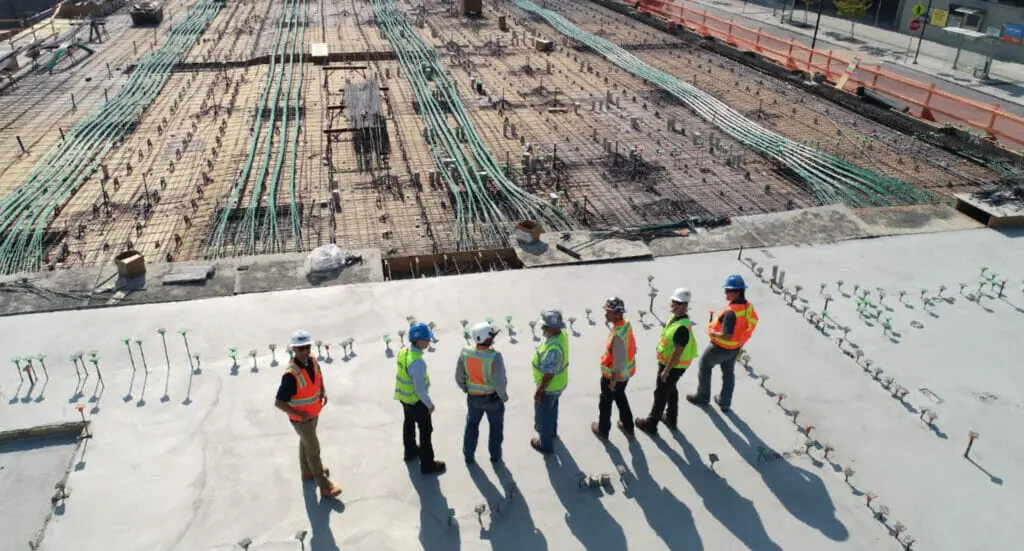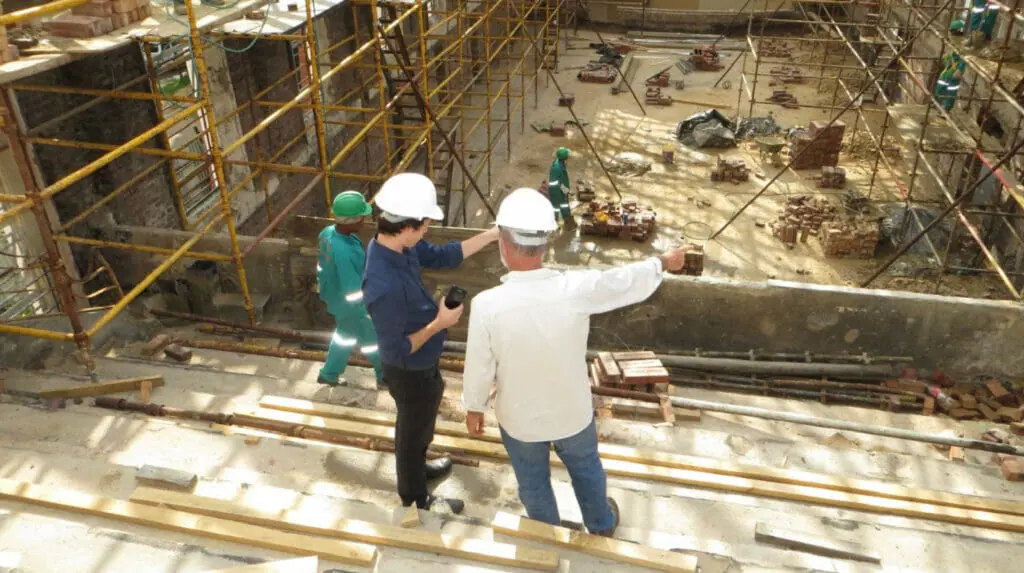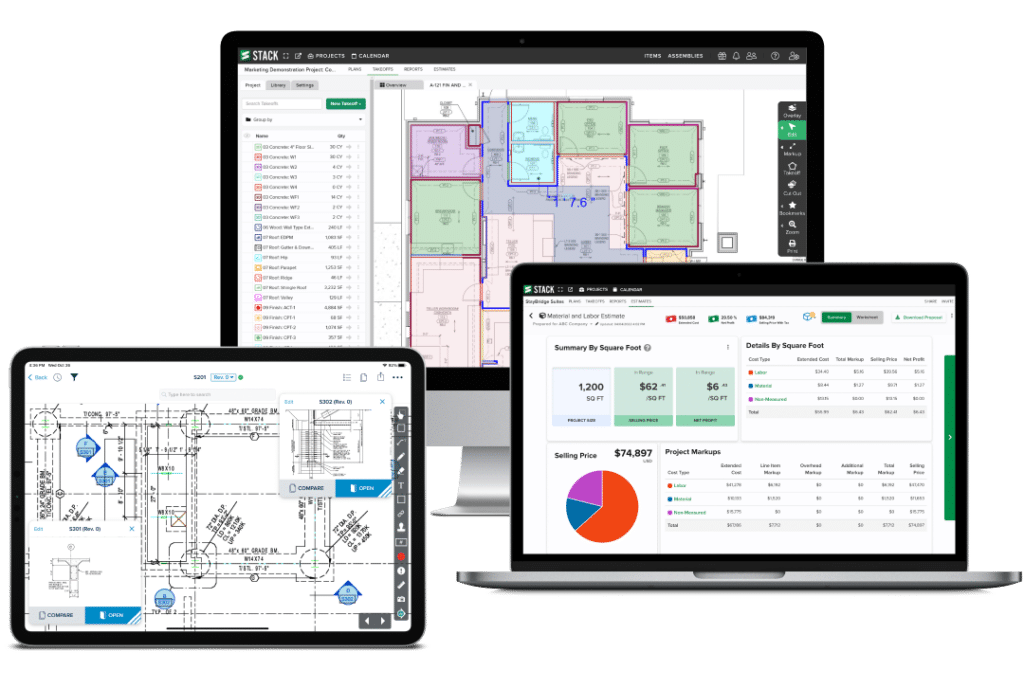
Whether you’re in construction as a supplier, general contractor, or subcontractor, your operations depend on good accounting.
Without good forecasting and data, small- and medium-sized construction firms are vulnerable to one nasty surprise that could sink the business. Inaccurate budgets, cost overruns, and breached payment schedules are all dangers that firms face without good accounting. Let’s look at those risks in more detail and see what construction companies can do to run a more stable, successful business.
Negative impacts of bad construction accounting
If you aren’t getting your accounting right every time, what negative impacts could that have on your construction operation?
Inaccurate budget and cost projections
One of the biggest impacts of bad construction accounting is getting budget and cost estimates wrong when planning a project. This is especially risky in construction, which is vulnerable to surprises like supply chain issues or complexities at the building site.
Material and labor costs are the most obvious places for things to get out of control. Some materials might be unavailable at the prices you’re used to, or a job might require more work than anyone expected. This can be especially true with the international nature of some construction projects, with workers and materials being coordinated from across the world.
There’s a margin of error there that firms need to account for. If not, they’ll make optimistic cost projections that fail to come true. If this keeps happening, firms will run out of the money they need to cover unplanned expenses.
Insufficient monitoring of project expenses
Keeping a close eye on the actual costs of construction is vital. Without good tracking, firms can lose sight of their financial situation until it’s too late to avoid problems.
In construction, it’s essential to check actual costs against project estimates in real time. A snag at one stage of a project can lead to overtime, bringing labor costs up. If a supplier raises the price of their materials after projections are made, that needs to be factored in.
Breach of payment schedules and commitments
If accounting isn’t accurate, construction firms risk breaching payment schedules and commitments.
Construction firms need to make sure staff and suppliers are paid on time. And poor accounting can lead to breaking the terms of loans or other financial agreements. This can have serious knock-on effects, such as harming the company’s credit rating, leading to higher interest rates, and even causing legal issues with lenders or creditors.
Legal disputes with suppliers and clients
Legal troubles with suppliers and clients are a major problem that can come from bad construction accounting. They can lead to major financial losses, ruin a firm’s reputation, or sink it entirely.
These disputes can come from mishandled business transactions. If a company isn’t careful with accounting and can’t pay subcontractors, those subcontractors might escalate to a court case to get the money they’re owed.

Reduced profit margins and potential financial losses
Bad construction accounting can reduce a firm’s profit margins, putting the overall finances at risk. If they can’t get their direct and indirect costs right on each project, it can eat into their profits over time.
Direct costs, such as labor and materials, are directly tied to a project. If a firm underestimates these, they could end up spending more than they planned. Indirect costs such as office rent and utilities may not be project-specific, but they still affect the bottom line. If firms don’t properly account for these, they could be surprised by less profit than expected at the end of each year.
Damage to industry reputation and loss of opportunities
Bad accounting in construction can harm a company’s reputation and cause them to miss out on work opportunities. This can happen when they don’t accurately handle things such as customer deposits and work with large businesses.
Customer deposits are extremely important in construction. Big construction projects often need a deposit from clients to get started. If this money isn’t properly accounted for, it can lead to disputes and even legal problems. Bad accounting can also cause project delays or failures.
Large businesses, whether clients or suppliers, usually have strict accounting rules. And they expect the companies they work with to follow them, too. If a construction company’s accounting isn’t up to the task, it could lead to lost partnerships, missed contracts, and missed chances to grow.
Payroll errors and delayed payments
Bad construction accounting can cause some serious payroll problems. Failing to pay your team correctly and on time can quickly get you into deep trouble. Handling payroll among staff and subcontractors can add another layer of complexity.
This can be especially difficult when it comes to paying team members in or from different locations such as Canada, the UK and the US. With different roles, pay rates, and overtime rules, it can be hard to track it all without good payslip software and proper processes.
How to mitigate the impacts of bad construction accounting
We’ve covered the impact bad construction accounting can have.
In an ideal world, it would never happen. But with 78% of construction companies in real estate running projects over budget, it’s clear that mistakes are inevitable.
Whatever a difficult project throws at you, there are best practices you can follow to keep your business as stable as possible.

Establish proper accounting systems and processes
Setting up proper accounting systems and processes is essential to avoiding bad construction accounting. By documenting the right processes, following them each time, and improving them as necessary, you can make sure bad accounting is the exception and not the rule.
For example a crucial process to get right would be HR and employee salaries. Here, the right payslip software can help you work efficiently while complying with industry-specific regulations, whatever countries you’re operating in. This can help work with non-US partners whether they’re architects in the UK to timber suppliers in Quebec.
If you’re operating internationally, good payslip software is ready to help you with region-specific issues like health insurance contributions in the US and pension contributions in the UK. These can accurately track hours worked, overtime, bonuses, and deductions, ensuring everyone is paid accurately, on time and with the right benefits.
And this software can be tailored to whatever accounting processes you need to follow. In the construction industry, two of those methods include:
- Percentage of completion method: At the end of each accounting period, revenue, expenses, and profits are recognized per project based on the project’s progress. If a project is estimated to cost $1m and you've incurred $0.5m in expenses, you can call it 50% complete. If your price for that project is $2m, you'd report 50% of that ($1m) as revenue.
- Completed contract method: Revenue, costs, and profits are recognized only after the contract has been completed. This is used in long-term contracts where the cost or time-to-completion of the project can't be accurately estimated.
Hire competent and experienced accounting professionals
While good accounting software is essential, you’ll get the most out of it by hiring experienced accountants. The right construction software for the right price can give you all the data you need, but an accounting pro has the experience to act on it.
Ideally, this is an accountant who can handle the construction industry’s unique challenges. Those include:
- Managing the costs for long-term projects, which need to be adjusted for over months or years.
- Managing cost overruns when they do crop up and doing so in the least disruptive way possible.
- Estimating the costs of each construction project step, from materials to hiring overhead costs. This includes handling margins of error and adjusting the rest of the project around surprises that come up here.
- Handling changes in the project scope and adjusting the rest of the firm's work around those changes if necessary.
Conduct regular financial audits and reviews
Doing regular financial audits and reviews can help control the problems caused by accounting errors.
Companies can find and fix mistakes by thoroughly checking financial records near the end of an accounting period. This gives them a chance to make sure they’re following the compliance requirements in their niche and improve their financial data accuracy.
Financial audits are when qualified, third-party professionals review a company’s financial records. They check to make sure everything looks correct and has been reported in the right way. They’ll also give an evaluation of the company’s financial health, which might be needed to take an investment or a loan.
Financial reviews, on the other hand, are a detailed look at financial records by someone that might be in the firm. These reviews evaluate the overall financial performance and suggest areas for improvement. They help check how strict the financial controls are, identify the biggest risks, and suggest ways to improve the usefulness of financial reports.

Adopt construction accounting software and technology
Using powerful accounting software is essential for any company that grows beyond a small team. It makes complex financial processes like reporting and compliance simple and eliminates chances for human error wherever possible.
In general, accounting software helps businesses manage their resources and make decisions about how they should work based on accurate forecasts. You should also consider project schedule tools which help to check whether a project is running to schedule or not.
That said, in construction, these accounting decisions are best made with detailed and combined information about resources and the project’s status. It’s why companies will use specialized tools like Sage ERP construction software to keep all their business data in one place.
By integrating your accounts with all the data that affects them, ERP software can reduce the amount of time you spend chasing the data you need and improve your business’s information flow.
When contract managers and quantity surveyors can input data as they work, giving you real-time data, it’s easy to spot cost overruns before they happen.
In the office, putting the whole business on one ERP system gives you everything you need to keep control of spending. And on the construction site, mobile apps let your team reconcile orders against deliveries, reducing costs, waste, and overhead costs.
- Automated reporting reduces the chance of human error messing up your accounting, financial statements, and projections.
- With real-time visibility, you can spot the effects of bad accounting as soon as they start to impact your business. Custom dashboards can show you factors such as project costs, free cash flow, and profitability as they change from day to day. With ERP software, there are no nasty surprises in your accounts.
- ERP software built with contractors in mind is designed to meet industry-specific requirements like the percentage of completion method and completed contract method for revenue recognition. You don't have to worry about your accounts being compliant with the tax laws and reporting requirements you need to follow.
Improving your construction accounting process
Accounting errors are inevitable. With proper systems and processes, the right accounting professionals, and construction-specific accounting tools, you can prevent bad accounting from negatively impacting your company’s financial health.
Implementing these best practices helps you run a more stable business and make sure compliance with industry regulations. Done right, it can also contribute to better decision-making, increased efficiency, and the overall growth of your business.
Bid Faster. Win More. Build Smarter.
Get your FREE account today to:
- Increase Team Efficiency
- Complete Estimates Faster
- Generate More Revenue









